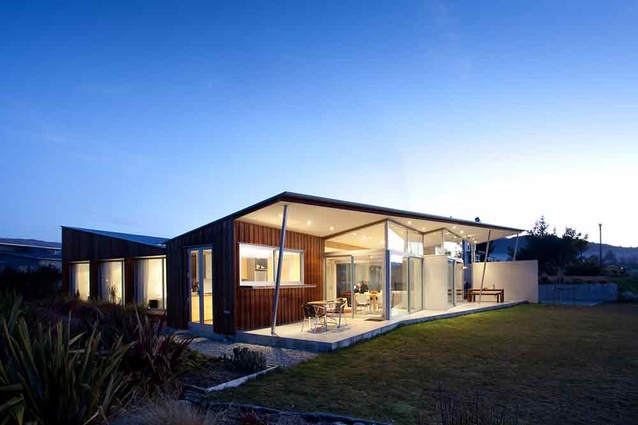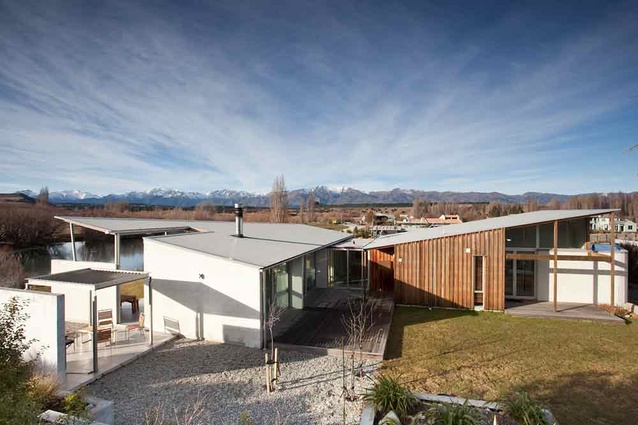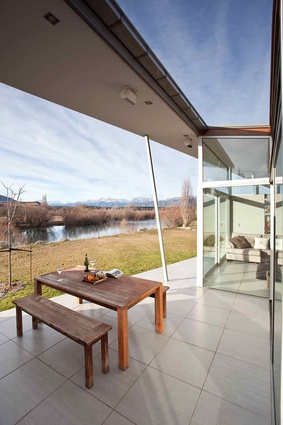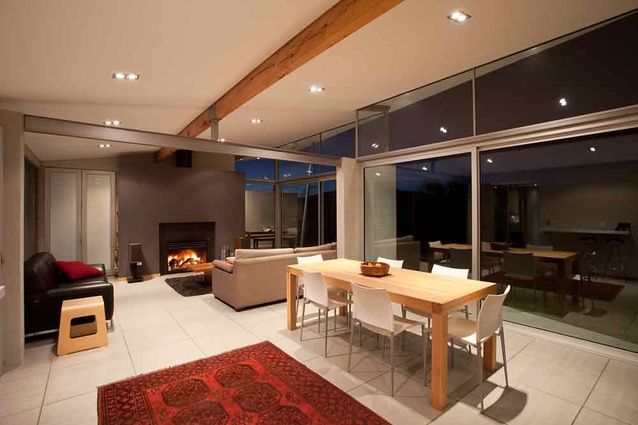Albert Town House
In this Albert Town house two pavilions create a simple, light space that lets the view lead the way.
Albert Town sits where the Clutha, Cardrona and Hawea rivers come together, east of Wanaka in Otago. The town, which was once a small farming settlement, has undergone significant development in recent years as the population has grown.
Architect John McCoy’s client purchased a rectangular site in Albert Town on an elevated plateau overlooking the Clutha river. The edge of the site lies adjacent to the river, with no road in between to block the excellent views.
The site had a lot to offer, with its height creating premium north-facing mountain vistas. The client had seen McCoy’s own holiday home in Wanaka and had sought him out to design a similarly light, quiet and subdued holiday home for the site.
The brief called for a house that allowed the client to sit in the lounge and enjoy an unobstructed view of the river. The client wanted a modest house that would be sympathetic to the surrounding landscape.

The house is made up of two pavilions: a north-facing living wing and an east-facing bedroom wing linked with a central entry foyer. This plan was designed to maximise the views. The separate garage combines with the L-shaped house plan to create a sheltered westerly oriented courtyard.
Having two pavilions and a separate garage breaks up the plan and reduces the visual scale of the buildings, ensuring it has a light touch. Both roofs rise up in a butterfly wing shape. On the living pavilion the roof rises up towards the north at its highest point and on the bedroom pavilion the south. The ceiling follows the pitch of the roof throughout the house. In the living pavilion this serves to maximise the area of north facing glazing.
The living wing has an open plan kitchen, dining and living room with a fireplace at the west end. A second small lounge sits beyond the fireplace. Both rooms have floor-to-ceiling glazed sliding doors so the north facing views can still be enjoyed from the sheltered patio on the south side of the lounge.
Three additional patios on the west and north sides create alternative sheltered outdoor living on the hot, dry and windy summer days.
The exterior walls on this wing are blockwork bag finished with a silicate cement based bagging system. Where possible McCoy kept the interior faces of these walls exposed.
The entry to the house connects the living wing with the bedroom wing. On the south of the entry foyer a hallway runs along the back of two bedrooms and stops at the door of the master bedroom. This wing is clad on the west side with cedar. At the south end of the bedrooms the en suite is wrapped in a white curved wall that drops down to single storey height from the tallest end of the wing roof.
This is a comfortable holiday house that makes the most of a great site. It looks light and spacious and is a modest house that is totally in keeping with its surroundings.














